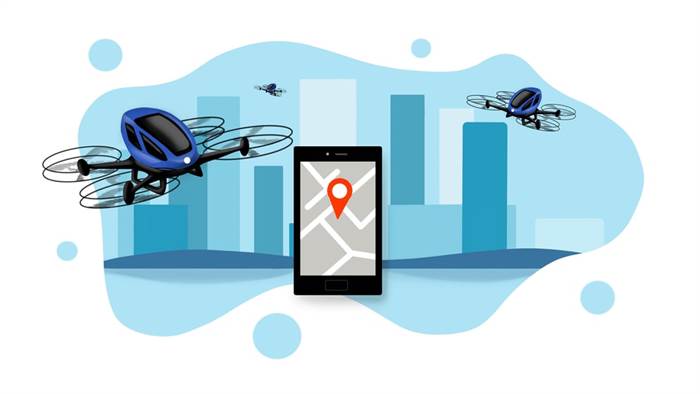Each company will have their own defined best practices for the various stages of development. For example, testing may involve a defined number of end users and use case scenarios in order to be deemed successful, and maintenance may include quarterly, mandatory system upgrades. The SDLC process consists of seven phases, including planning, design, testing, and maintenance. Every phase can be supplemented by various tools to support the phase’s main goal.

The lean methodology works best in an entrepreneurial environment where a company is interested in determining if their idea for a software application is worth developing. The beauty of software development is that methodologies can be combined to create a hybrid solution that distinctively addresses the unique needs of a project. Usually, organizations prefer to trust system analysts to make that decision and select the best-suited methodology or combination of models. Famous for its iterative approach to software development that offers rapid-fire progress, Agile is a framework that fosters highly collaborative environments between all the teams involved in a project. Well, in the context of software development, it’s not too far from the truth. The prototyping model builds prototypes or small replicas of the software to emulate how the final product will behave with all the functioning aspects built to behave as expected.
Phases
Once you’ve got your design plans in front of you, it’s time for wireframing and mockups. This step builds upon the planning stage, building out the tasks you need to do in the work breakdown schedule. There are plenty of tools available, such as Adobe XD or InVision, that make this process much easier than ever before.
- In order to improve the system over time, the Repair and Maintenance phase is a critical component of the continuous improvement process.
- Each stage must be completed in its entirety before moving on to the next; once a stage is done, it cannot be revisited.
- You can address security in SDLC following DevSecOps practices and conducting security assessments during the entire SDLC process.
- This will prevent them from overdrawing funding or resources when working at the same place as other development teams.
- This phase consists of maintenance and performing regular necessary updates.
- In systems design, functions and operations are described in detail, including screen layouts, business rules, process diagrams, and other documentation.
- Perhaps most importantly, the planning stage sets the project schedule, which can be of key importance if development is for a commercial product that must be sent to market by a certain time.
They also figure out how much time and cost it will take to implement the evaluated needs. The project management lifecycle is a step-by-step framework of best practices used to shepherd a project from its beginning to its end. It provides project managers a structured way to create, execute, and finish a project. DevOps professionals also work side-by-side with developers and testers to help monitor the end product across its cloud infrastructure, scalability, and load. This unique role frequently moves several times throughout SDLC phases, formulating requirements for the system along the way for the next development cycle, and upholding SDLC standards. Project managers are also responsible for keeping stakeholders in the loop of everything that’s happening with a project by engaging with them regularly and keeping communication channels open and flowing.
Iterative Model
Setting a strong foundation and defining a clear understanding of a project is crucial to the success of any information system. For this reason, the SDLCs first phase is planning where stakeholders and all parties involved in the project participate to clearly define requirements and the nature of what the information system will need to solve. The planning phase helps delineate all subsequent tasks so they can be planned and budgeted for accordingly. The SDLC phases are designed in a way that progressively develops or alters a system across its life cycle. If followed through from beginning to end, the SDLC will help deploy a fully-operational, high-quality system that meets and/or exceeds client requirements, all within the specified time and budget constraints.

The agile model is both iterative and incremental, making it more efficient than other process models. The development team combines automation and manual testing to check the software for bugs. Quality analysis https://www.globalcloudteam.com/ includes testing the software for errors and checking if it meets customer requirements. Because many teams immediately test the code they write, the testing phase often runs parallel to the development phase.
Phase 5: integration & testing
As soon as the system is deployed and used by end users, the Repair and Maintenance phase takes place. As part of this phase, any issues are promptly resolved, ensuring that the system is functioning correctly. In order to improve the system over time, phases of system development life cycle the Repair and Maintenance phase is a critical component of the continuous improvement process. Repair and maintenance ensure that the system is secure, up-to-date, and meeting the changing needs of the end-users during the System Lifecycle phase.
If there is a problem, possible solutions are gathered and analyzed to find the best-fit for the project. The Agile model prioritizes collaboration and the implementation of small changes based on regular feedback. The Agile model accounts for shifting project requirements, which may become apparent over the course of SDLC. This process involves detecting the possible bugs, defects, and errors, searching for vulnerabilities, etc., and can sometimes take up even more time compared to the app-building stage. The testing stage ensures the application’s features work correctly and coherently and fulfill user objectives and expectations.
ABOUT TOOLSHERO
Empower your people to go above and beyond with a flexible platform designed to match the needs of your team — and adapt as those needs change. This process is repeated again and again, with each iteration yielding a new version of, for instance, the software. An existing system is replaced by a new system that consists of replaced components or modules to ensure that it meets new requirements. SAD is mostly used to find a balance between requirements at a higher level.
Gathering all of the specific details required for a new system, as well as defining the first prototype concepts, is part of the analysis step. It’s easy to identify and manage risks, as requirements can change between iterations. However, repeated cycles could lead to scope change and underestimation of resources.
Quality management and System Development Life Cycle
Again, since SDLCs utilize extensive paperwork and guideline documents, it’s a team effort and losing one even major member will not jeopardize the project timeline. Developers clearly know the goals they need to meet and the deliverables they must achieve by a set timeline, lowering the risk of time and resources being wasted. The agile methodology prioritizes fast and ongoing release cycles, utilizing small but incremental changes between releases. This results in more iterations and many more tests compared to other models.

Each project has its own level of complexity in planning and execution, and often within an organization, project managers employ numerous SDLC methods. Even when an enterprise utilizes the same methods, different project tools and techniques can differ dramatically. In order to understand the concept of system development life cycle, we must first define a system.
Integration and Implementation Stage – How Will We Use It?
Due to this, the consumer can view the end outcome and decide if he is happy with it or not. Extreme programming is one of the examples of the Agile Model present in the industry. Developers first create an initial basic version of the software rapidly and then after testing and reviewing it, they improve the software in tiny stages or iterations.